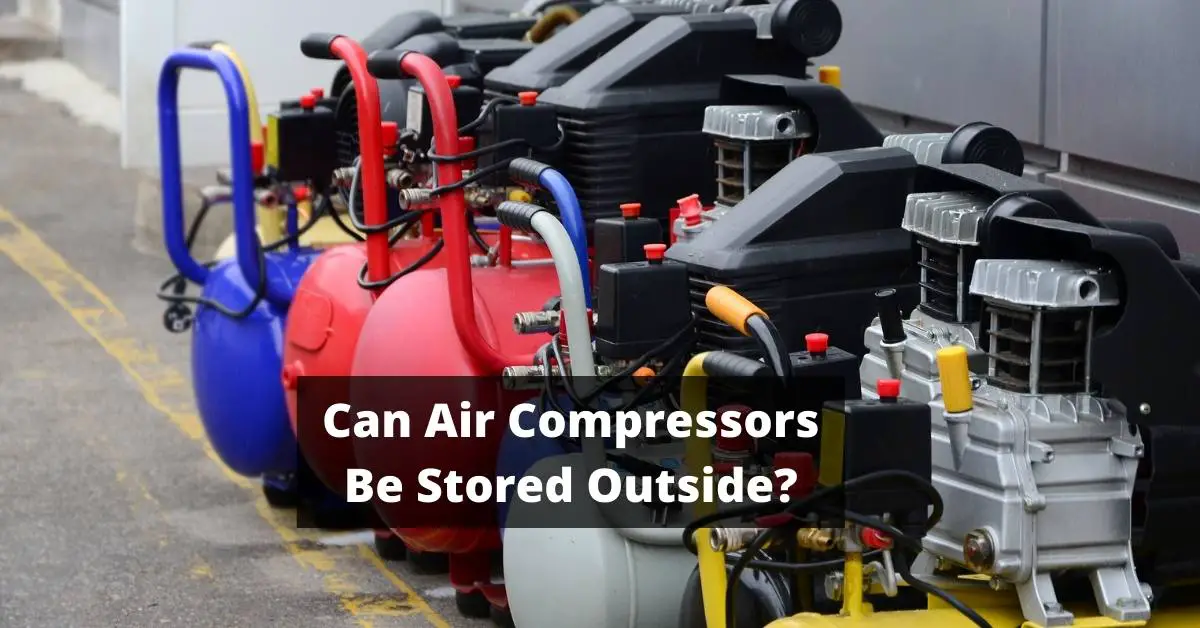Have you ever felt the frustration of trying to sand a surface with an underpowered air compressor? It’s like trying to race a sports car on an empty tank.
As someone who has been in the auto body industry for over a decade, I understand the importance of having the right tools for the job. And when it comes to using a DA sander, having the correct size air compressor is crucial.
In this article, we’ll explore what factors you need to consider when choosing an air compressor for your DA sander and how to calculate the required CFM (cubic feet per minute) so that you can make an informed decision.
By the end of this article, not only will you know what size air compressor is needed for your DA sander, but you’ll also have some maintenance tips to keep it running smoothly for years to come.
So let’s dive in!
Understanding the Function of a DA Sander
You can’t just pick up any power tool and expect it to work properly without understanding its function first. This is especially true for a DA sander.
A dual action sander, or DA sander, operates using an orbiting motion that rotates the sandpaper disc while also moving it back and forth in small circles. This produces a smooth finish on surfaces like wood, metal, or plastic.
The key advantage of a DA sander is that it avoids creating marks or swirls on the surface being worked on. But achieving this requires precision control over the speed and pressure applied by the tool.
The DA sander’s ability to apply smooth pressure depends largely on two factors: air pressure and airflow volume. That’s why choosing the right size air compressor is so important when running a DA sander.
Ultimately, selecting an appropriate air compressor for your needs will depend on several different factors. These include the type of work you’ll be doing (heavy-duty versus light-duty), how often you’ll be using the tool, and whether you need portability or not.
Let’s explore these factors more closely in order to determine what size air compressor would be best suited for running your DA sander effectively and efficiently.
Factors to Consider When Choosing an Air Compressor
When choosing the right equipment for sanding, it’s important to think about how much power you need and if your current setup can handle it. The size of your air compressor is a crucial factor to consider when using a DA sander.
A DA sander requires a consistent flow of compressed air to operate effectively, which means you’ll need an air compressor that can deliver the necessary amount of air. One important factor to consider when choosing an air compressor is its horsepower (HP). Generally, the more horsepower an air compressor has, the more powerful it is, but this also means it will consume more energy.
Another important factor is the tank size. The larger the tank, the longer you can use your tools without stopping to wait for the tank to refill with compressed air.
It’s essential to choose an air compressor that matches your specific needs and budget. Calculating how much CFM (cubic feet per minute) is required for your DA sander is crucial in determining what size of compressor will work best for you. We’ll explore this further in our next section on calculating required CFM.
Calculating the Required CFM
To properly run a DA sander, it’s important to understand CFM – cubic feet per minute – and how to calculate the required CFM for your specific sander.
As someone who has worked with air compressors for years, I know that choosing the right compressor size is crucial for achieving high-quality results and preventing damage to your tools.
In this subtopic, we’ll dive into the details of understanding and calculating CFM for a DA sander, so you can be confident in your choice of air compressor.
Understanding CFM
Understanding how much air your tool needs is critical when selecting the right compressor for the job. CFM, or cubic feet per minute, is the measurement of how much air a tool requires to operate properly. If you don’t have enough CFM, your tool won’t be able to work efficiently which will result in poor performance and longer working times.
To give you an idea of what this means practically, let’s take a DA sander as an example. A typical DA sander needs around 10-12 CFM at 90 PSI to perform effectively. This means that you need a compressor that can deliver this amount of air at that specific pressure level.
Understanding these numbers is crucial if you want to get the most out of your tools and avoid any unnecessary frustrations during work. Calculating CFM for a DA sander can seem daunting at first, but it’s actually quite simple once you know what to look for.
Calculating CFM for a DA Sander
If you want to take your sanding game to the next level, imagine a jet engine propelling your sander forward and calculate the amount of air it needs using the CFM measurement.
CFM stands for cubic feet per minute and is a measure of how much air an air compressor can deliver at a specific pressure. The higher the CFM rating of an air compressor, the more powerful it is and the better it can handle tools with high airflow requirements such as DA sanders.
Calculating the required CFM for a DA sander depends on its size and speed. A small 3-inch sander operating at low speeds may only require around 5-6 CFM, while a larger 6-inch sander operating at high speeds could need up to 10-12 CFM or more.
It’s important to choose an air compressor that can provide enough airflow for your specific DA sander model to ensure optimal performance. With that said, let’s dive into recommended CFMs for different types of DA sanders.
Recommended CFM for a DA Sander
You’ll need a steady stream of air flowing through your DA sander to achieve that smooth, polished finish. The recommended CFM for a DA sander is at least 10 cubic feet per minute. This will ensure that the sander can operate efficiently and effectively.
If you don’t have enough CFM, the tool won’t have sufficient power to complete the job. It may also cause unnecessary wear and tear on your equipment. Not having enough airflow can negatively impact the quality of your work too, resulting in an uneven surface or incomplete finish.
To prevent these issues from happening, make sure you use an air compressor with adequate CFM for your DA sander.
In the next section, we’ll discuss how to choose the right air compressor to meet your needs and provide sufficient airflow for your tools.
Choosing the Right Air Compressor
Picking out the perfect air compressor to run your DA sander is essential for getting the best results on your sanding project. The right air compressor can make all the difference between a smooth and even finish or a rough and uneven surface. It’s important to consider certain factors when choosing an air compressor, such as CFM (cubic feet per minute) and PSI (pounds per square inch). These factors determine how much power your air compressor can deliver to your DA sander.
When selecting an air compressor, you need to ensure that it has enough CFM to keep up with your DA sander’s demand. A good rule of thumb is to choose an air compressor with at least 4-5 CFM per minute for each of your DA sanders. This will provide enough power to maintain consistent pressure and airflow while you work. Additionally, you also want to make sure that the PSI matches what your DA sander requires.
Another factor you should consider when choosing an air compressor is its size and portability. If you’re working in a small space or if you need to move around frequently, then a smaller, more portable unit might be ideal for you. However, if you have larger projects or work in one location consistently, then a larger unit may be more suitable for you since it can hold more compressed air and doesn’t require frequent refills.
Choosing the right air compressor for your DA sander means taking into account various factors such as CFM, PSI requirements, size/portability needs etc., but once chosen correctly it’ll pay off in terms of improved efficiency while working on sanding projects.
Now that we know how crucial selecting the correct sized air-compressor is, let’s talk about how we can maintain our Air Compressor at optimum levels in order not only to get maximum efficiency but also to extend its lifespan. This leads us into discussing maintenance tips for keeping our compressors running smoothly!
Maintenance Tips for Your Air Compressor
As a technician who regularly uses air compressors, I know that proper maintenance is key to keeping my equipment in good working condition.
Regular cleaning and inspection of the compressor’s components can detect potential issues before they become major problems.
Lubrication and oil changes also play a vital role in ensuring smooth operation and longevity of the machine.
And when parts wear out, timely replacement is necessary to prevent damage to other components.
These simple but critical steps can help extend the life of your air compressor and keep it running at peak performance.
Regular Cleaning and Inspection
Take a few minutes every now and then to give your tools a good once-over, checking for any signs of wear or damage and cleaning out any debris that may have accumulated. Regular cleaning and inspection are essential to keep your air compressor running smoothly and efficiently.
Dirt, dust, and other contaminants can clog up the components of your air compressor, causing it to work harder than it needs to. If left unchecked, this can result in increased wear and tear on the machine, leading to costly repairs down the line. To prevent this from happening, make sure you clean your compressor’s intake vents regularly using compressed air or a soft brush.
You should also inspect all hoses, fittings, and other connections for signs of leaks or damage. Finally, check the oil level in your compressor’s crankcase regularly – low oil levels can cause serious damage to your machine over time.
By taking these simple steps on a regular basis, you’ll help ensure that your air compressor stays in top working condition for years to come. As important as regular cleaning is lubrication and oil changes. It’s vital that you keep the moving parts of your air compressor well-lubricated if you want them to work properly over an extended period of time.
Neglecting this aspect could lead to premature failure of components such as bearings which will ultimately leave you with no choice but replacing them at an additional cost.
Lubrication and Oil Changes
Now that we’ve covered the importance of regular cleaning and inspection, let’s move on to another crucial aspect of maintaining your air compressor: lubrication and oil changes. As with any machine that has moving parts, proper lubrication is essential to ensure smooth operation and prevent wear and tear.
Most air compressors come with a manual that specifies the type and frequency of lubrication needed. It’s important to follow these guidelines, as over-lubricating or under-lubricating can cause damage to your compressor.
Additionally, regular oil changes are necessary to remove contaminants that may accumulate in the oil over time. Neglecting this step can lead to decreased efficiency and even complete breakdowns.
As you can see, proper lubrication and oil changes are critical for keeping your air compressor running smoothly. However, even with regular maintenance, some parts will eventually wear out and need replacement. Let’s discuss this next step in more detail.
Replacement of Worn Out Parts
Maintaining your air compressor is essential for its longevity, and part of that maintenance includes replacing worn-out parts to ensure optimal performance.
As a user of a da sander, I know how important it is to have an air compressor that can keep up with the demands of this tool.
Over time, the parts in your air compressor may wear down due to regular use, and they will need to be replaced so that you can continue using your da sander without any interruptions.
Some common parts that may need to be replaced include the pressure switch, regulator, check valve, and gauges. These parts are all vital components of your air compressor’s performance and should be inspected regularly for signs of wear and tear.
By replacing these worn-out parts as soon as possible, you can ensure that your air compressor is running efficiently and providing consistent airflow for your da sander.
In conclusion, choosing the right size air compressor for your da sander is crucial in achieving optimal performance. However, maintaining it properly by replacing worn-out parts should not be overlooked. By doing so, you can prolong the life of your air compressor while also ensuring that it provides consistent airflow for all of your pneumatic tools’ needs.
Conclusion: Importance of Choosing the Right Air Compressor for Your DA Sander
You don’t want to risk damaging your precious projects or wasting time and money on ineffective sanding – that’s why choosing the right equipment for your DA sander is crucial. One of the most important pieces of equipment you need to consider when using a DA sander is the air compressor.
A compressor with insufficient capacity can result in frustratingly slow sanding, while one with too much power can cause damage to the tool itself. So, what size air compressor do you need for your DA sander? The answer depends on several factors, including the type of sander you’re using, its air consumption rate (CFM), and the size of the project at hand.
As a general rule, you should look for a compressor that has a CFM rating that is at least 1.5 times higher than what your sander requires. This will ensure that you have enough power to operate your tool effectively without overworking or damaging it.
When selecting an air compressor for your DA sander, it’s also important to choose one with a large enough tank size that can hold sufficient compressed air to keep up with demand during extended use. Additionally, consider factors such as portability and noise level when making your decision.
By taking these factors into account and investing in a high-quality compressor that meets all of your needs, you’ll be able to achieve professional-grade results every time you use your DA sander!
Conclusion
In conclusion, choosing the right air compressor for your DA sander is crucial to achieving optimal performance and getting the job done efficiently. Don’t cut corners when selecting the appropriate compressor for your needs.
It’s important to consider factors such as horsepower, tank size, and CFM rating to ensure that you have enough power to run your sander without any interruptions or delays. Regular maintenance of your air compressor is also essential in keeping it running smoothly and prolonging its lifespan.
This includes regularly changing oil, checking for leaks and damages, and cleaning or replacing filters as needed. Remember that investing in a high-quality air compressor may require a bit more upfront cost, but it will ultimately save you time and money in the long run by reducing downtime and increasing productivity.


